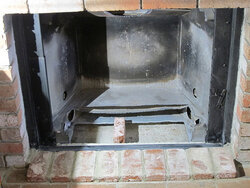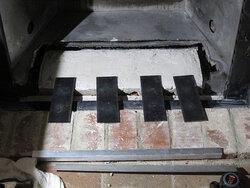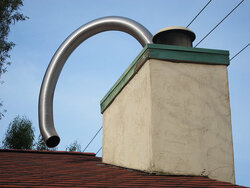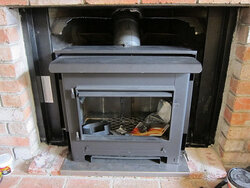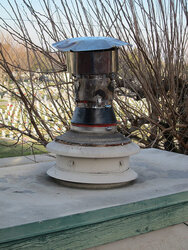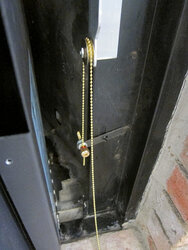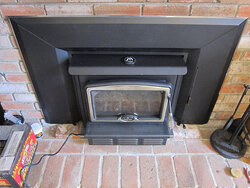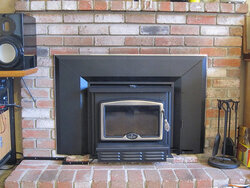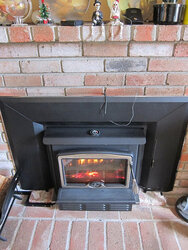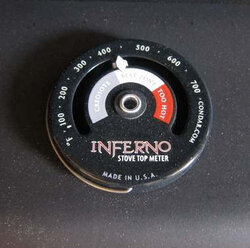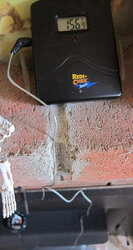Well, here it is, the long convoluted tale. How I got the insert in a zero clearance.
This is intended to be just my tale of my install. I'm not suggesting anyone follow my lead as it's probably not to code. In other words, entertainment value only. Again, I'm not heating my house with this thing, I don't order firewood by the cord, I get small bundles at the grocery store from time to time so I can enjoy the dancing flames without sucking all the heat out of my house. Romance and ambiance!
The beginning;
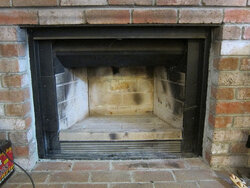
A Marco DWF 36. Circa 1984. When I bought the house in 89 all the refractory was cracked and I replaced it. A fireplace store in San Jose had it in stock. Now it has to be custom made. Before the install I hired a sweep to clean the flue (8 inch steel inside 12 inch steel) and he found the flue in good shape, very little creosote and he was amazed that the damper was still intact, said a lot are rusted out from rain. Only repairs needed were cracked refractory, $500.
The fireplace was installed on a slab in it's own alcove / chase;
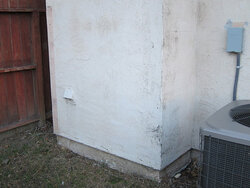
The dryer vent is the outside air supply to the fireplace. I got busy with the plasma torch;
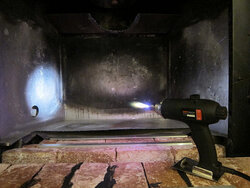
The idea was to replace the bottom refractory with bricks and add bricks to the hearth and bridge with a steel sheet pan and slide it right on in;
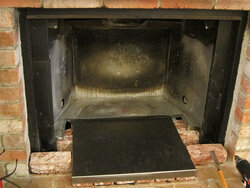
But it didn't install. It slid in just fine, but there was no way it was going to connect to the flue liner. I bought the double wall flex liner kit from the Osburn factory site when I ordered up the insert. Yes it's flexible, but not that flexible. The despair started big time. This thing will not work and I've just destroyed my fireplace. I'm going to have a big ugly hole in my house forever. I need help.
So I called up a install house. Sold inserts and installed them. Cool, go to the pros, they know what to do. I don't care how much it costs, a few grand is OK and way better then this hole in my house. They told me you can't install an insert in a zero. They wanted no part of it.
OMG what have I done?
Going out for lunch, more later.
This is intended to be just my tale of my install. I'm not suggesting anyone follow my lead as it's probably not to code. In other words, entertainment value only. Again, I'm not heating my house with this thing, I don't order firewood by the cord, I get small bundles at the grocery store from time to time so I can enjoy the dancing flames without sucking all the heat out of my house. Romance and ambiance!
The beginning;

A Marco DWF 36. Circa 1984. When I bought the house in 89 all the refractory was cracked and I replaced it. A fireplace store in San Jose had it in stock. Now it has to be custom made. Before the install I hired a sweep to clean the flue (8 inch steel inside 12 inch steel) and he found the flue in good shape, very little creosote and he was amazed that the damper was still intact, said a lot are rusted out from rain. Only repairs needed were cracked refractory, $500.
The fireplace was installed on a slab in it's own alcove / chase;

The dryer vent is the outside air supply to the fireplace. I got busy with the plasma torch;

The idea was to replace the bottom refractory with bricks and add bricks to the hearth and bridge with a steel sheet pan and slide it right on in;

But it didn't install. It slid in just fine, but there was no way it was going to connect to the flue liner. I bought the double wall flex liner kit from the Osburn factory site when I ordered up the insert. Yes it's flexible, but not that flexible. The despair started big time. This thing will not work and I've just destroyed my fireplace. I'm going to have a big ugly hole in my house forever. I need help.
So I called up a install house. Sold inserts and installed them. Cool, go to the pros, they know what to do. I don't care how much it costs, a few grand is OK and way better then this hole in my house. They told me you can't install an insert in a zero. They wanted no part of it.
OMG what have I done?
Going out for lunch, more later.



